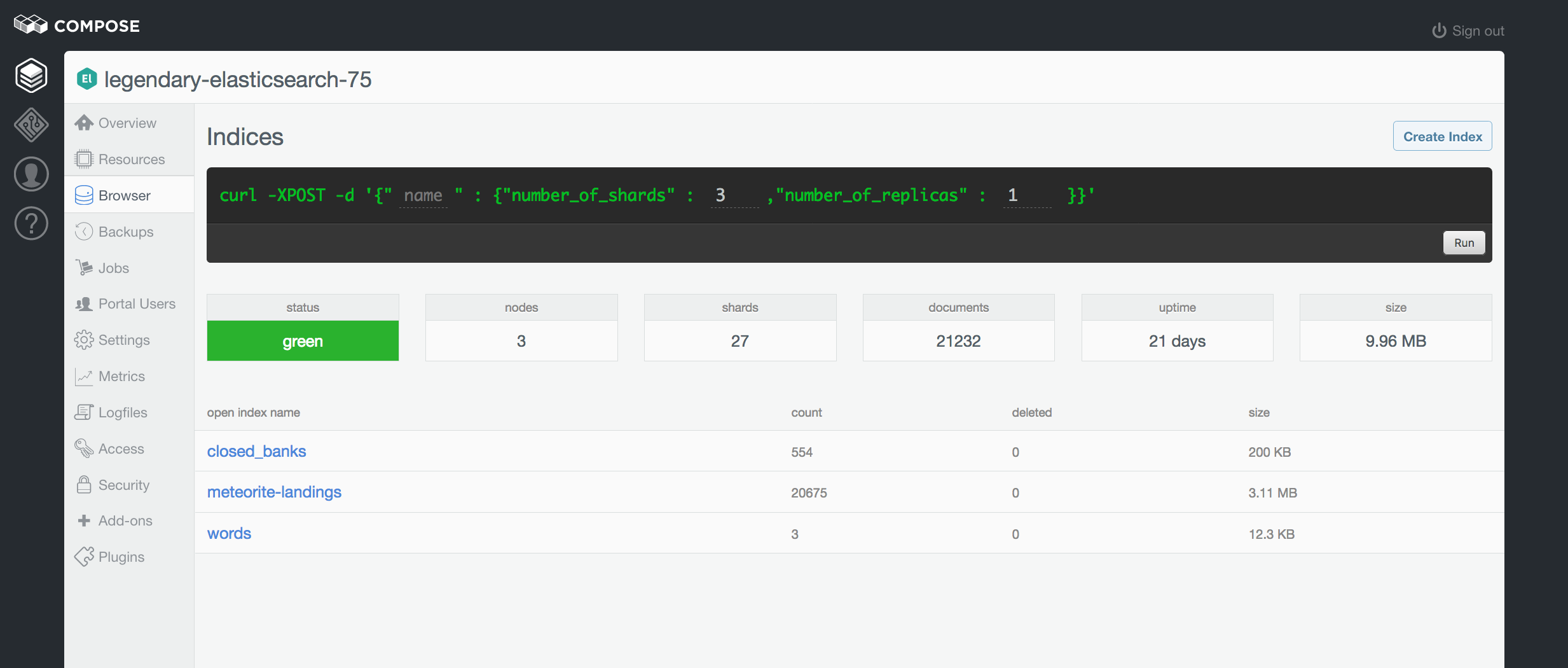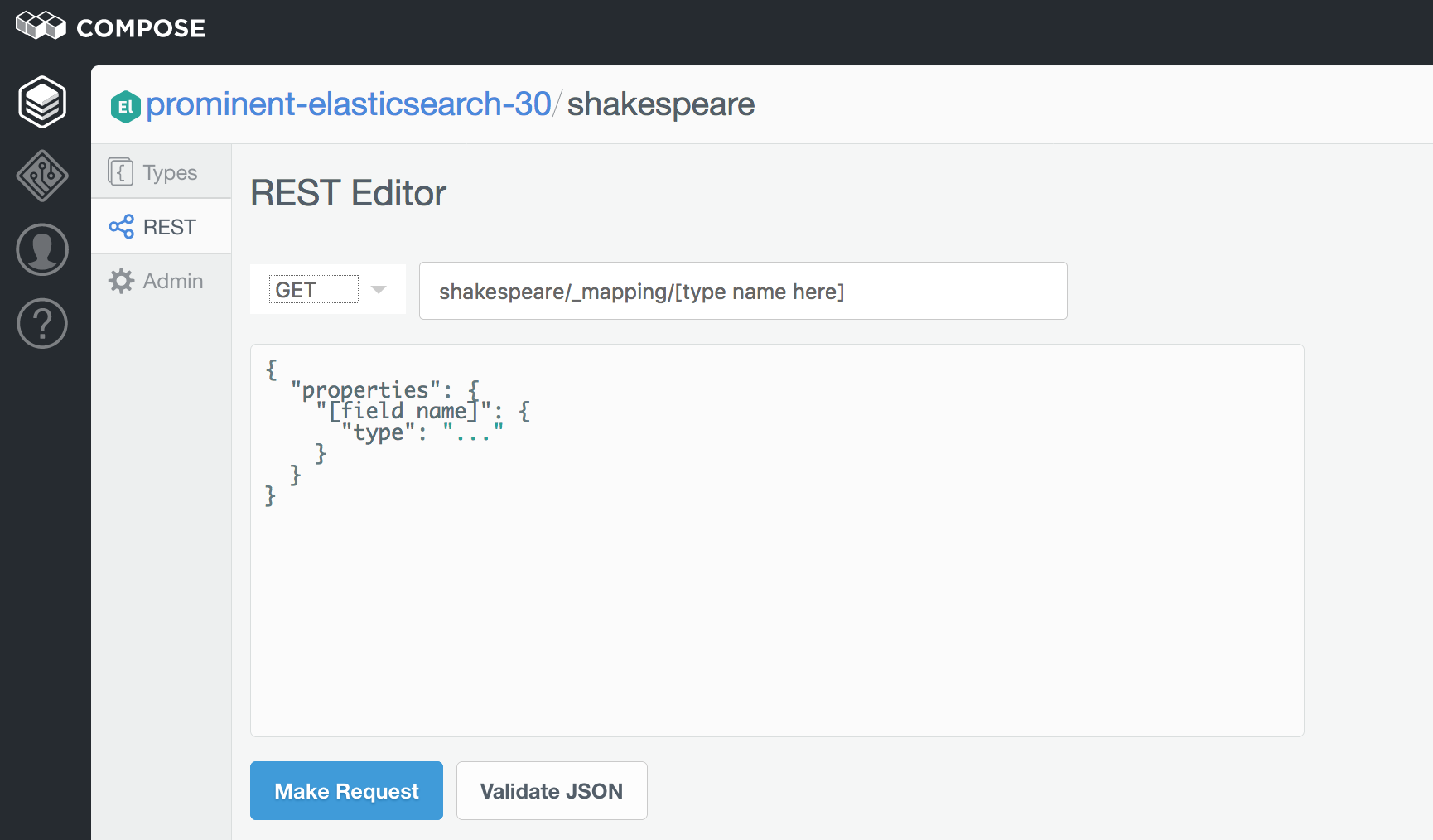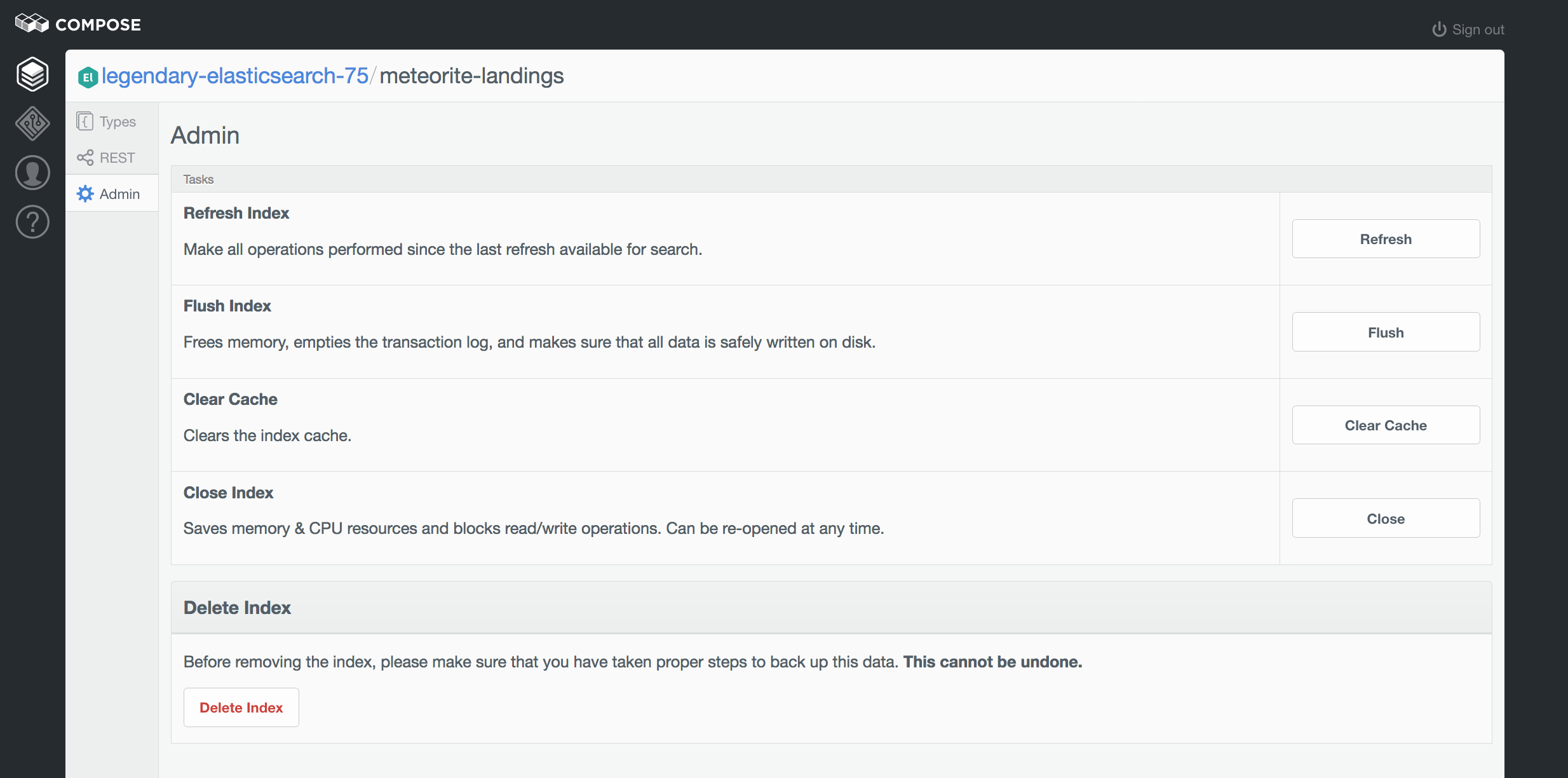How To View Elasticsearch Data
Data Browser for Elasticsearch
The information browser is designed to make queries, index creation, alphabetize maintenance, and other Elasticsearch APIs available through the Compose Console.
The first page of the data browser shows the condition of the cluster, similar to the results from executing a Cluster-wellness call. It displays the deployment's status, uptime, total deejay size, the total number of nodes and shards, and the total number of documents from all indices.
Beneath that is a list of all indices, showing the number of documents, the number of deleted documents, and the disk size of each index.

Main browser window with the shakespeare index.
To get back to the principal page of the deployment, click on the deployment proper noun at the top from any screen.
In the upper right of the main page of the data browser is a Create Index button. To create a new alphabetize:
- Click Create Index and enter a proper noun for the index in the
gyrescript showing at the meridian of the page. - Gear up the index fields to the desired values. By default, they are set up to three shards and 2 replicas.
- Run the script.

Index cosmos curl script.
Once the alphabetize is created, the view changes to a list of the types in this index. Clicking the 'Rest Editor' link in blue pulls up a generated URI endpoint and a JSON mapping template for creating a new type.

Types listing for an index.
Upon creating a new index or selecting an existing index the sidebar on the right contains the tools to edit types and run queries, a Residuum editor, and an assistants panel.
Click on an index proper noun to access the list of types in the alphabetize, and and then click on the type name to run a query on documents of that type. Query results are displayed beneath the query-string and the certificate details are revealed by clicking on them.

Query results.
The Documents tab displays the fields and contents of the documents while the Mapping tab displays the field mapping for this type. It is likewise possible to insert documents for each type using Insert Document in the upper right.
The Balance editor allows admission to the Elasticsearch API by selecting one of the Go, PUT, POST, or DELETE commands from the drop-downwardly carte and building a URI endpoint in the neighboring text field. GET, PUT, and POST besides have a text box for a JSON torso. Once the request is made, the upshot is displayed below.

The browser's REST editor.
One matter to note, the Residue editor does back up the \_bulk inserting of data merely it is not recommended equally it could cause browser slowdown and instability. For \_bulk inserts using a curl script is the preferred method.
In the Admin section, there are multiple tools for alphabetize performance and optimization from the Elasticsearch Indices API. The effects are limited to the electric current working index.

An alphabetize'due south admin panel in the browser.
###Still Need Assistance?
If this article didn't solve things, summon a human and go some help.
Updated most three years ago
How To View Elasticsearch Data,
Source: https://help.compose.com/docs/elasticsearch-data-browser
Posted by: wagnergear1974.blogspot.com


0 Response to "How To View Elasticsearch Data"
Post a Comment